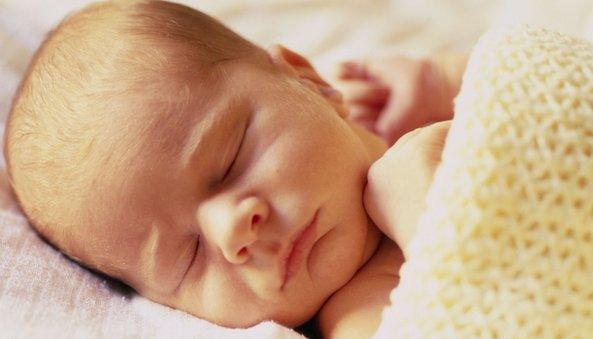Worry as women left alone in labour
- Published

The maternity survey is carried out every three years
A quarter of women in England are left alone during labour and birth at a time that worries them, according to an official survey.
The finding comes from a poll , externalof 23,000 women by the Care Quality Commission, which is carried out every three years.
While care improved on many antenatal and postnatal measures, the regulator said it was concerned about what was happening in the delivery room.
Midwife leaders said the problems were directly linked to a shortage of staff.
There are currently over 21,000 midwives in the NHS in England - a rise of 1,200 in two years.
But the Royal College of Midwives believes there is a shortage of 4,800 because the birth rate is at its highest since the early 1970s.
The survey showed a significant number of women were concerned about the care they got during labour and birth.
'Not good enough'
Some 39% reported raising concerns - although the CQC did not ask whether they were minor or major issues.
Of those that complained, a fifth said they were not taken seriously enough.
Overall, the poll showed:
25% of women were left alone during labour or birth - up from 22% in 2010
Half did not use the pain relief they had planned to, mainly because of medical reasons or a change of mind but in one in four cases lack of time was cited
9% reported problems with the cleanliness of bathrooms and toilets
During antenatal care 34% saw the same midwife, 37% did not see but did not mind and 28% did not but did mind
78% of women said they had confidence in the midwives caring for them - up from 73% in 2010
Three quarters of women said they were always involved in decision about their care - again up from the previous survey
Nearly nine in 10 said they were spoken to in a way they could understand during both the antenatal and labour/birth periods
About 10,000 women provided detailed comments about their care as well as filling out the survey.
A number of themes arose from their reports, including poor pain management, cleanliness and a sense of bullying over breastfeeding.
Sir Mike Richards, the CQC's chief inspector of hospitals, said he was "encouraged" by the improvements.
But he added: "In too many cases the quality of care delivered is just not good enough.
"Women and their partners are being left alone when it worries them, toilets and wards are described as unclean and some women are not given the pain relief they had expected or planned to use in their birth plan."
Disheartening
Sir Mike said one of the key issues he would be looking at during future inspections would be staffing levels.
He also listed the seven hospitals - out of the 137 delivering maternity care in England - that came out worst in the survey.
These were:
Barking, Havering and Redbridge University Hospitals NHS Trust
Barts Health NHS Trust
Croydon Health Services NHS Trust
Homerton University Hospital NHS Foundation Trust
Lewisham Health Care NHS Trust
North West London Hospitals NHS Trust
Nottingham University Hospitals NHS Trust
Cathy Warwick, of the Royal College of Midwives, said: "The survey shows that the NHS continues to fail too many women. It sets out yet more evidence of the real-life and disheartening effects on women of the shortage of midwives. How many more flashing red lights do we need?"
A spokeswoman for the National Childbirth Trust added: "The bottom line is that in order for things to improve we need more midwives, working effectively, providing continuity for women."
- Published8 November 2013
- Published11 April 2013
- Published21 January 2013
- Published26 October 2012
- Published29 December 2010